Members
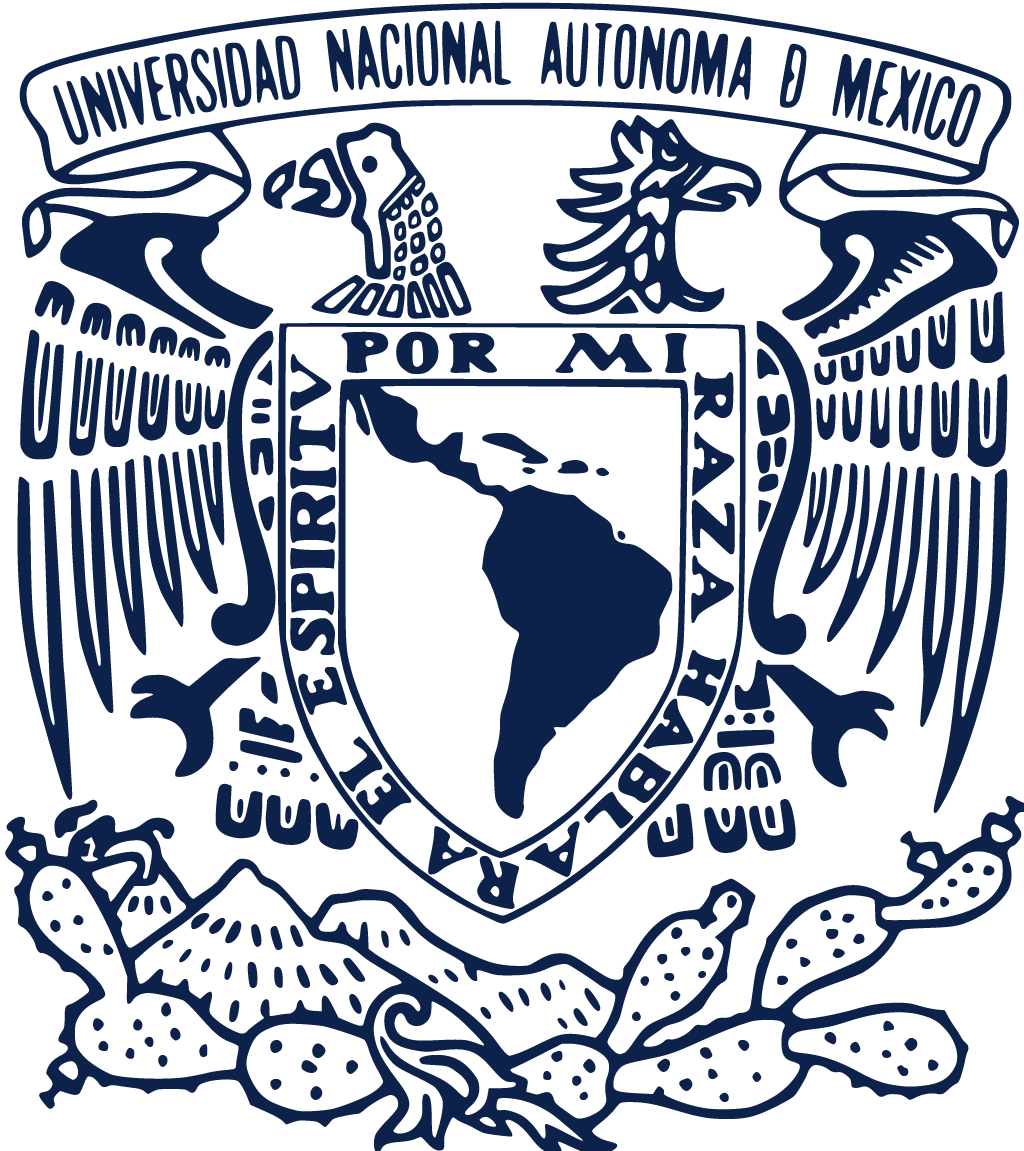 |
Institute of Geography, National Autonomous University of MexicoMéxico, D.F. |
| Outline In June 1943, the University Council approved the creation of the Institute of Geography, which began its activities in Palma street number 9 in the Historic center of Mexico City. In 1954 it moved to Ciudad Universitaria (CU), a former adjoining the Tower of Sciences, Humanities Tower today-II and in 1975 was changed within the same University City, the Circuit of Scientific Research building. The Institute of Geography has played a major role in university and national scientific development to give rise to the Center for Research in Environmental Geography (CIGA), Campus Morelia, created in August 2007. The Institute of Geography is the oldest and largest of its kind in central Mexico, currently its structure consists of three departments (Economic Geography, Physical Geography and Social Geography), a Laboratory Geospatial Analysis (LAGE), a Section Editorial (SE ) and two support units (Unit -UTI- Information Technology and Library which has more than 35,000 titles and houses the most comprehensive and important collection of the country in the field of geography, as well as one of the best map libraries, consisting of more than 20,000 documents). [detail] --> |
|
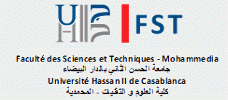 |
Faculty of Sciences and Techniques of Mohamadia
|
| Outline Establsihed in 1975, University of Hassan II of Casablanca is a public university locatin in Casablanca, Morocco. There are over 24,000 total students, including local and foreign. Full-time faculty teachers and professors are over eleven hundred, making it the third largest university in Morocco. Official staff total 850 people. The Faculty of Sciences and Techniques-Mohammadia (FSTM), part of Hassan II University of Casablanca, belongs also to a network of eight Faculties of Sciences and Techniques (FST) throughout Morocco whose main vocation is academic training in science and technology. The FSTM, located in an area with strong industrial activity, and a vulnerable coastal area. Indeed the city of Mohammedia, and its wider region, namely Casablanca-Settat are facing important risks of floods and erosion. Probabilistic risk assessments for the entire country reveal that floods, earthquakes and tsunamis are expected to cost on average USD 500 million annually, of which flooding constitutes the biggest part. The main disaster risks in Morocco are floods and droughts, earthquakes, tsunamis, coastal erosion and sea level rise.sources. [detail] --> |
|
Myanmar
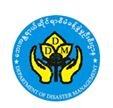 |
Department of Disaster Management, Min. of Social Welfare, Relief and Settlement, Republic of the Union of MyanmarNay Pyi Taw |
| Outline Relief and Resettlement Department had emerged in Myanmar since the pre-independence .1945, a center for social and rehabilitation has emerged in the Office of the Director load desertion collecting loans and resettlement issues. 1948 When independence of Education, Ministry of Social and Rehabilitation was originally formed as operations proceed. Education on (1-11-1951) Relief and re-formed as the Ministry of placement loan collection, deserters Insurgency community housing forsaken supplies to rescue people, destroyed homes and placed back in service. In 1972, rescue, Resettlement and the Ministry of National Unity formed as canceled. Relief and Resettlement Department under the Ministry of Social Welfare Department. Relief and Resettlement Department, Emergency Management Center (EOC), Disaster Management Training Center (DMTC), Region / State Department's Office (15) Office and the Office of the District Officer's Office (29) activities. On 31.1.2018 the name of Relief and Resettlement Department, the Department of Disaster Management name was transformed. [detail] --> |
|
International Centre for Integrated Mountain Development (ICIMOD)Kathmandu |
|
| Outline The International Centre for Integrated Mountain Development (ICIMOD) is a regional intergovernmental learning and knowledge sharing centre serving the eight regional member countries of the Hindu Kush Himalayas - Afghanistan, Bangladesh, Bhutan, China, India, Myanmar, Nepal, and Pakistan - and based in Kathmandu, Nepal. Globalization and climate change have an increasing influence on the stability of fragile mountain ecosystems and the livelihoods of mountain people. ICIMOD aims to assist mountain people to understand these changes, adapt to them, and make the most of new opportunities, while addressing upstream-downstream issues. We support regional transboundary programmes through partnership with regional partner institutions, facilitate the exchange of experience, and serve as a regional knowledge hub. We strengthen networking among regional and global centres of excellence. Overall, we are working to develop an economically and environmentally sound mountain ecosystem to improve the living standards of mountain populations and to sustain vital ecosystem services for the billions of people living downstream now, and for the future. [detail] --> |
|
Netherlands - EMI
Center for Disaster ResilienceUniversity of TwenteEnschede Contact person: Dr. Funda Atun |
|
| Outline The Centre for Disaster Resilience (CDR) is a center of excellence within the university of Twente, faculty of Geo-Information Science and Earth Observation (ITC) with the aim to conduct fundamental, interdisciplinary and applied research, dissemination, education and training, international cooperation, and providing advisory services in the field of disaster resilience. The CDR was officially launched on 28 October 2021 by H.R.H. Princess Margriet together with the coordinator and lead-scientist Dr. Irene Manzella. The mission of CDR is to increase well-being and global sustainable growth by significantly decreasing disaster risk with emphasis on the application of spatial analysis and Earth observation methodologies. CDR addresses all aspects of Integrated Disaster Risk Management (Natural and Technological hazards) with a particular emphasis on disaster resilience. It combines physical sciences (hazard related studies like hydrology, geology, ...), social sciences (rural and urban planning, vulnerability studies, ...) and technological sciences (geo-information science, Earth observation, ...). It brings together nearly 70 scientists within the faculty ITC, ranging from PhD researchers to full professors, that have an interest in disaster resilience from their specific perspectives. CDR is also member of the 4TU-resilience initiative - a collaboration of the four technical universities in the Netherlands and it is one of the centers of excellence within the Integrated Research on Disaster Risk (IRDR) research program. [detail] --> |
|
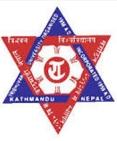 |
Institute of Engineering, Tribhuvan UniversityPatan |
| Outline Nepal being the landlocked country in the northern hemisphere and sandwiched between two Asian giants: China and India, has the glory of having world's highest mountain- Sagarmatha (Everest) and being the birth place of Lord Buddha- Light of Asia. The beauty of the country is extreme diversity within close proximity of topography, ecology, flora and fauna. Owing to the topography and people, Nepal has rich cultural heritage. Visualizing the economy, Nepal is in the process of transformation. The concern now is the development of the country and prosperity of the people. Prosperity is not only the material well-being; it is building capacity of the people with rights and responsibility. Institute of Engineering (IOE) visioned to be instrumental to achieve this national goal of prosperity of the country and the people. This can be done by producing capable and competitive engineering graduates. Engineering education has two dimension; skill developing and capital formation. Both are equally important for the economic growth of the country. As the world is moving towards knowledge based economy, all the nations are entering into 'global skill race'. In this race, education knowledge and skills are assuming ever-greater importance. Understanding this essence, IOE is striving to move forward with market relevant programs and research works. [detail] --> |
|
 |
GNS ScienceLower Hutt |
| Outline We are New Zealand's leading provider of Earth, geoscience and isotope research and consultancy services. We apply our scientific knowledge from the atomic to the planetary scale to create wealth, protect the environment, and improve the safety of people. Since 1865 we have demonstrated scientific excellence in a country that straddles two tectonic plates, where earthquakes were first associated with geological faulting, and whose first Nobel Laureate, Ernest Rutherford, saw that radioactive isotopes could be used for geological dating. Today, we continue these investigations, from the atomic to the planetary scale. These activities are expressed through our Māori name, Te Pū Ao, which means "the foundation, origin, and source of the world". We are proud of our 140-year-old heritage inherited from New Zealand Geological Survey [1865-1990], DSIR Geophysics Division [1951-1990], Institute of Nuclear Sciences [1959-1992], and DSIR Geology and Geophysics [1990-1992]. In 1992, Crown Research Institutes (CRI) were established by the New Zealand Government. While our registered company name remains the Institute of Geological and Nuclear Sciences Limited, in 2006 we re-branded to become GNS Science. [detail] --> |
|
Norway - Nord University
 |
Nord UniversityBodo |
| Outline Nord University innovation center and preparedness management lab (NORDLAB) Nord university preparedness management lab (NORDLAB) provides an arena for situational awareness and risk assessments with a special focus on cold-climate areas, as well as education, research, exercises and tests within crisis management related to sea, land and air-based emergency response. NORDLAB is the lead partner of the UArctic thematic network on safety and security and also holds a chair on Societal Safety and Se UArctic - UArctic - University of the Arctic. NORDLAB provides computer-based simulation capacities integrated with crisis management decision-support tools and command and control support systems. In cooperation with world-leading suppliers of emergency preparedness software, modelling and simulation systems as well as decision making support solutions we offer an advanced training and test arena within emergency management for students and professionals. [detail] --> |
|
 |
German University of Technology OmanMuscat |
|
Outline GUtech provides students with the education required to become highly qualified and socially responsible graduates, guided by German [detail] --> |
|
Pakistan - University of Management and Technology (UMT), Center for Disaster Management
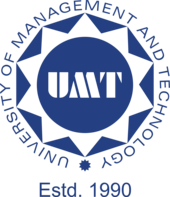 |
University of Management and Technology (UMT), Center for Disaster ManagementLahore |
|
Outline The University of Management and Technology (UMT) was established in 1990 and has evolved into a premier institution of higher education in the country. Recognized by the Higher Education Commission (HEC) of Pakistan as a "W4" category (highest rank) university, UMT distinguishes itself with 400+ full-time faculty members including more than 200+ PhDs, 26,000+ alumni and 25,000+ students from Pakistan and various countries around the globe. The Center for Disaster Management established under the ambit of University of Management and Technology, Lahore, Pakistan has been mandated to lead research and education in the field of Disaster Management in Pakistan. The scope of the Center for Disaster Management at UMT is to support the public sector, emergency services, industry and communities by providing capacity building, specialized knowledge, skill development and conducting collaborative research in disaster management in order to meet the targets under the Sendai Framework for Disaster Risk Reduction and the UNSDGs in order to build a more resilient society. Center for Disaster Management at UMT is the flagship Center in knowledge and skill development in disaster preparedness, mitigation, and risk management. The Center builds upon the synergy of existing faculties within UMT for research in cross-cutting themes in disaster management, and includes experts in various aspects of disaster policy, management, risk reduction and sustainable development. The Center is also linked with the School of Governance and Society at UMT and is offering undergraduate program "BS in Disaster Management"; related graduate-level programs in DRR and DRM are also in the planning phase. [detail] --> |
|
Pakistan-University of Peshawar
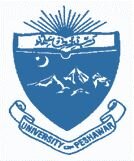 |
University of PeshawarPeshawar |
|
Outline The University of Peshawar, as a mother educational institution of Khyber Pakhtunkhwa is an outcome of the dream of the father of the nation and was created as the first ever University after independence. It is vigorously working with its full zeal and spirit, truly serving and sacred cause of education altogether. The University of Peshawar founded in 1950, is the fulfillment of a dream, which had long remained unrealized. The first seeds of the University may be said to have been sown by Sir Sahibzada Abdul Qayyum Khan, who boldly conceived the idea and founded Islamia College - (The Dar-ul-ulum Islamia) in 1913 at the first out-post of civilization, almost at the mouth of the historic Khyber Pass. The founder of Pakistan, Quaid-e-Azam Mohammad Ali Jinnah, who perhaps saw the strategic role of Peshawar in his mind, on April the 12th, 1948, while addressing the students and teachers of the Islamia Collage Peshawar The University of Peshawar, being a mother Institution of the Khyber Pakhtunkhwa is not only catering for the academic needs of Peshawar but also of the whole province and Federally Administered Tribal Areas (FATA). The highly qualified and trained faculty, student friendly and supportive administration, modern curricula, conductive academic environment and excellent infrastructure are the hallmarks of the University. Its role in political, industrial and government leadership is recognized. The University has an over whelming contribution in bringing positive changes in the society. [detail] --> |
|
 |
Partnerships in Environmental Management for Seas of East AsiaQuezon City |
|
Outline PEMSEA carries out this mandate through these operating mechanisms: East Asian Seas (EAS) Congress Held every three years, the Congress serves as an intellectual melting pot of the various stakeholders, partners and collaborators, and is an opportunity to share knowledge and monitor the progress of the SDS-SEA programmes and projects. Among the various events of the Congress are a Ministerial Forum and an International Conference. The Ministerial Forum is a venue for providing policy directions and commitments related to SDS-SEA implementation, while the International Conference conducts knowledge exchange activities and discussions targeted at specific sectors' issues, while promoting priority programmes and various mechanisms and encouraging corporateresponsibility the business community. [detail] --> |
|
 |
Disaster Risk Management Unit, Graduate School of Business
|
|
Outline Philippine School of Business Administration (PSBA) was incorporated as a full-fledged school in 1966. It is duly recognized by the Philippine Commission on Higher Education (CHED) and included in World Higher Education Database (WHED). It is also part of United Nations Educational, Scientific and Cultural Organization's (UNESCO) and the International Association of Universities (IAU) so called IAU/UNESCO List.
The main rationale of the School is to help meet the country's management requirements for more advanced and sophisticated industrial and commercial life and government responsibilities as well. PSBA started its Research Arm for Disaster Risk Management (DRM) researches and projects in 2001. Currently, to fulfill the country's demand for DRM formal education, PSBA-Manila has launched the Master of Business Administration (MBA) specialization in Disaster Risk Management (DRM) program in first semester of Academic Year 2017-2018 being the first Higher Education Institution (HEI) to offer a formal DRM education in the Philippines. Researches on Disaster Risk in The Philippine School of Business Administration (PSBA) started in 2001, when Dr. Teodoro Santos and Prof. Harry Lorenzo along with Dr. Teodorico Molina approved the proposal of Dr. Tabassam Raza, while taking up his Doctorate in Business Administration, for his dissertation that was focused towards Disaster Risk Management (DRM). The pilot research entitled "Strategic Model: Conceptualization and Implementation of a Total Disaster Risk Management: Cherry Hills Tragedy, Antipolo City", was published on 2002 as a first of its kind of researches on disasters in the Philippines. In 2003, the DRM Unit was founded under the Graduate School Research Center of PSBA where Dr. Raza was appointed Special Associate for the DRM and Information Technology (IT) Researches and Projects for PSBA. From here on, researches on DRM with focus on Business Continuity were done under the name of the School. [detail] --> |
|
 |
National Hydraulic Research Center, National Engineering Center, University of the Philippines at DilimanDiliman, Quezon City |
| Outline The National Hydraulic Research Center (NHRC) was established in 1973 as a unit of the University of the Philippines with the aim of creating a R & D center within an academic environment to conduct research and provide technical advice on various problems of water resources development and management, hydrology, hydraulic and coastal engineering, fluid mechanics, and other related fields. Its creation in the 1970's was very timely since the national government then started undertaking several water resources projects which required the technical inputs provided by both local and international experts in the field of water resources. Research Achievements and Challenges: In almost 40 years of its existence as a unit under the umbrella of the U.P. College of Engineering and the National Engineering Center, NHRC has developed and served as the national center of water-resources expertise, and provided the support organization and physical facilities for conducting the necessary physical and mathematical modeling research and producing technical output and advice in water resources engineering and management needed by government and the private sector. The outputs and activities of NHRC are in the forms of improved designs and plans of hydraulic structures (developed either by physical or mathematical modeling), engineering application software, technical training and transfer of technology to clients' personnel, technical analysis and advice on particular problems, publications, lectures/seminars/conferences, and consultations and meetings with various concerned sectors in the water resources field. [detail] --> |
|
Philippines - Planning and Development Research Foundation, Inc
 |
Planning and Development Research Foundation, IncUniversity of the PhilippinesDiliman, Quezon City |
|
Outline In 1978, PLANADES was certified as a tax-exempt corporation by the Department of Science and Technology (DOST), formerly the National Science Development Board. It formally entered into a working and collaborative arrangement under a Memorandum of Agreement dated 10 August 1978 with the U.P. School of Urban and Regional Planning (UP SURP) where the corporation is presently based. Research interests includes mainstreaming Disaster Risk Reduction (DRR) and Climate Change Adaptation and Mitigation (CCAM) in policy formulation; Institutional development, urban and rural land-use and development planning; and public infrastructure and housing among others. Essentially, our organization Programs, Projects, and Activities (PPAs) are geared towards disaster risk reduction management thematic areas (i.e., Disaster preparedness, response, rehabilitation and recovery and prevention, and mitigation). [detail] --> |
|
Philippines - University of the Philippines Resilience Institute (UPRI)
 |
University of the Philippines Resilience Institute (UPRI)Diliman, Quezon City |
| Outline The UP Resilience Institute was established as a proactive hub of benchmark innovative information vital to the nation's efforts in climate change mitigation and adaptation. Its mission is to empower local communities through multidisciplinary actions toward resilience. As a response through its Memorandum No. PAEP-16-67, the University of the Philippines Board of Regents (BOR) approved on 28 July 2016 the establishment of the University of the Philippines Resilience Institute (UP RI) to have the following functions and programs concerning multi-hazard, multidisciplinary, multisectoral, comprehensive disaster risk reduction and management (DRRM): Research and Creative Work: undertake policy research, action research and interdisciplinary or transdisciplinary research or creative work [detail] --> |
|
Poland - The Main School of Fire Service (SGSP)
 |
The Main School of Fire Service (SGSP)Warsaw |
| Outline SGSP in Warsaw (Poland) is the only one in Poland and one of the few state interdisciplinary universities in the world, which trains fire officers and educates specialists in safety engineering and internal security. SGSP is scientifically and educationally supervised by Ministry of Interior and Administration. It has full academic rights and constitutes an organizational unit of the State Fire Service (PSP). Nowadays, SGSP, as a technical-social university, provides studies on the Faculty of Safety Engineering and Civil Protection, as well as carries out research on the Institute of Safety Engineering and the Institute of Internal Security. SGSP carries out research in disaster risk reduction, CBRN, rescue, fire protection, civil protection, critical infrastructure protection, internal security, occupational safety and health, crisis management and crisis communication. SGSP representatives serve as experts in NATO, EU as well as national scientific and rescue institutions. [detail] --> |
|
Singapore - Nanyang Technical University
Institute of Catastrophe Risk ManagementNanyang Technological UniversityNanyang Avenue |
|
| Outline The Institute of Catastrophe Risk Management (ICRM) was officially launched on 21 January 2010 and aims to be the first multi-disciplinary and leading catastrophe risk management research institute of its kind in Asia. ICRM has its focus on Asia because Asia has traditionally suffered the most in terms of human fatalities and economic loss from natural catastrophes, while being the least prepared region of the world to mitigate such risks. The Institute aims to help the regional and international communities to better understand the characteristics of risks related to natural disasters such as earthquakes, tsunamis, volcanic eruptions, typhoons, floods, droughts, as well as non-traditional risks which may include infectious diseases and terrorism. Through ICRM, NTU faculty and researchers will work on integrated risk assessment and management of natural hazards as well as man-made threats. Such work will be conducted in collaboration with research organisations worldwide in the risk management domain as well as insurers, reinsurers and risk modellers from the finance and (re)insurance industries and associations. ICRM aims to develop Asian catastrophe risk models and to build up industry benchmarks and indices which reflect the uniqueness of Asian catastrophe risks. ICRM is envisioned to be a key player in Singapore's effort to further strengthen its position as a major international finance hub, especially in the (re)insurance areas. The models and tools developed by ICRM will allow governments, public organisations and the industry to analyse potential losses, and so develop risk-management strategies. Decision-makers in Asia in particular will be able to utilise such tools to identify vulnerabilities, prepare for a range of possibilities and allocate resources. ICRM will undertake the state-of-the-art multi-disciplinary research work which leads to better understanding, communicating and managing of major disasters, both natural and non-traditional, and thereby provides major positive impacts on the society. [detail] --> |
|
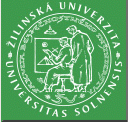 |
Faculty of Security Engineering, University of ZilinaZilina |
| Outline The history of the Faculty of Security Engineering began in 1952 when the Faculty of Railways at the Military Technical Academy (VTA) in Brno was founded. Due to the reorganisation of the university system in the year 1953, the VTA was incorporated into the Technical College of Railways in Prague and named the Military Faculty. The University moved to Žilina in 1961 and it was renamed the University of Transport, later on the University of Transport and Communications. In 1998, the Military Faculty was renamed the Faculty of Special Engineering of the University of Žilina and the military studies were ended towards the year 2004. All these changes influenced the structure of educational programmes offered by the Faculty. The courses aim mainly at solving natural, ecological, economic, social and other crisis situations, civil security and rescue services. |
|
Disaster Management Training and Education Centre for Africa
|
|
| Outline University of the Free State is one of the oldest and top universities in South Africa with a total of approximately 35 000 students. Its Disaster Management Training and Education Centre for Africa (UFS-DiMTEC) based in the Faculty of Natural and Agricultural Sciences is the largest post graduate program in disaster management in Africa with more that 60 post graduate diploma students, 50 Master students and 20 PhD candidates. When disaster strikes, all living creatures naturally react with a fight-or-flight response. But what if you're not strong enough, or have nowhere to run? This is when suffering sets in. Hunger, death, degradation, loss, damage, destruction, desperation. Since 2001, we have the vision to reduce disaster risk - because we can! At the University of the Free State (UFS) Disaster Management Training and Education Centre for Africa (DiMTEC), we strive towards informing the public about disaster risk reduction through education. Our master's, postgraduate degrees in disaster management, short courses, and research are of the highest quality. The recent addition of a PhD ensures that research towards making a difference continue in various fields. DiMTEC's first course was approved and registered by the South African Qualifications Authority in 2001, after which we joined the Department of Agricultural Economics in the vision of becoming an independent centre, which came about in 2005. The education and research at DiMTEC is multi disciplinary with a focus on disaster risk reduction in Africa. We have a footprint in more than 17 African Countries. [detail] --> |
|






